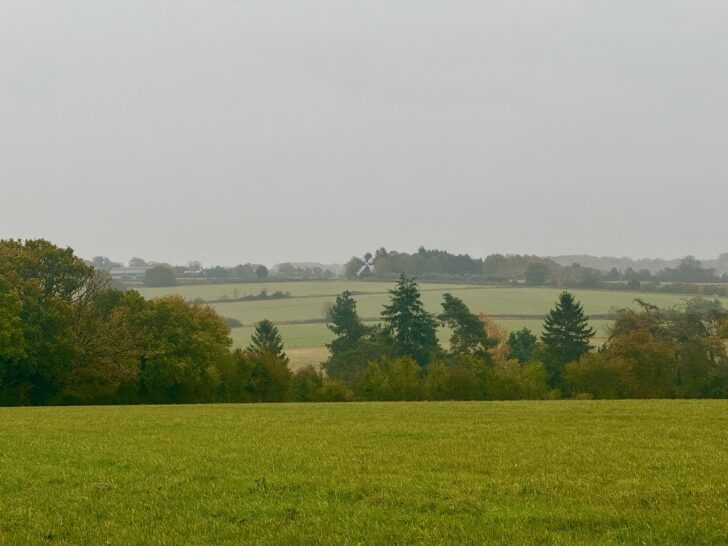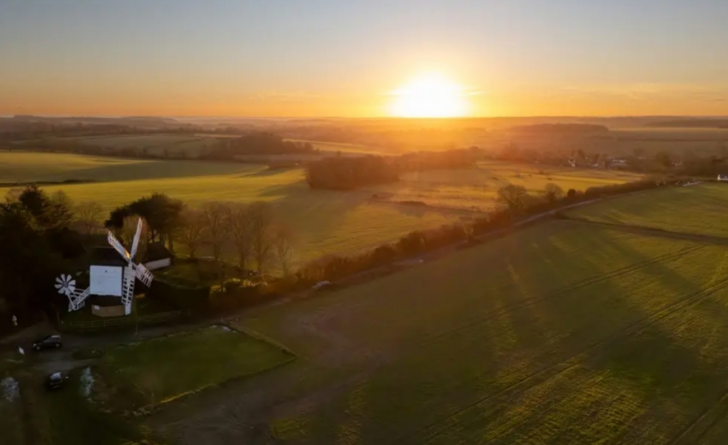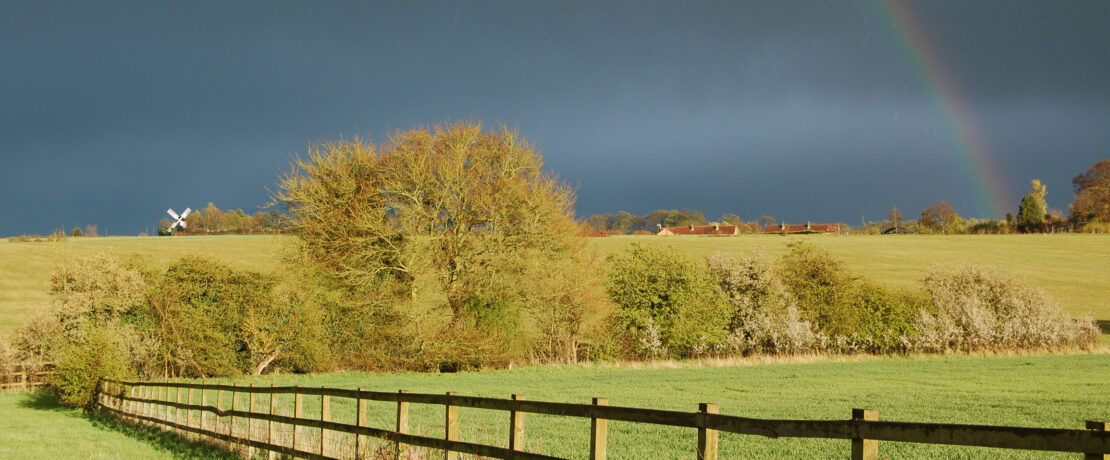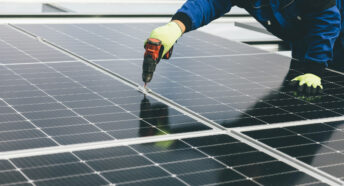Fighting Beane Solar – our campaign for the rural countryside in East Herts
We are campaigning to save a large swathe of beautiful pastoral countryside between Cromer and Cottered in East Hertfordshire. 80 hectares of this designated rural landscape is now under threat of industrialisation. RES Energy has submitted a planning application for a huge solar farm and battery energy storage system (BESS).
We are dismayed by the recent flood of large-scale, land-hungry commercial development proposals in the Hertfordshire countryside. Over the past several years we’ve seen over a dozen proposals for commercial solar farms covering more than 700 hectares (1700 acres) of the countryside.
But don’t we need more solar energy?
Yes, solar energy should be a part of the UK’s energy mix. But we want to see rooftop solar energy production, not mass solar farms on productive agricultural land that could be used for food production.
We recently wrote to the twelve Hertfordshire MPs urging them to support the ‘Sunshine Bill’ in Parliament. This would ensure all new homes are installed with solar panels, and we want the Government to go further and ensure all new commercial buildings would be similarly equipped. There is vast untapped rooftop acreage on warehouses, commercial and municipal buildings, and canopies above car parks. Even Solar Energy UK, the solar industry’s trade association, says there are over 617,000 acres of suitable, south-facing rooftops available that should be utilised for solar energy production.
But we keep seeing proposals for industrial-scale solar farms on highly valued landscapes in the countryside. Proponents say this will reduce our energy bills, but this is highly unlikely as the price of energy is linked to the price of natural gas. See the BBC’s recent report ‘If the UK has more renewable energy, why aren’t bills coming down?’
Proposed ‘Beane Solar Farm’
We have many concerns about this proposed solar farm (East Hertfordshire planning application 3/24/2245/FUL). Our concerns are summarised here and you can also read full details in our formal objection.
Rural Area Beyond the Green Belt
Developer RES Energy is proposing an industrial-scale solar farm on 80 hectares (c. 200 acres) of arable agricultural land. The site is within the Rural Area Beyond the Green Belt (RABGB) as designated in the adopted East Hertfordshire Local Plan. The Plan states
‘This Rural Area is highly valued by the District’s residents and visitors alike, particularly for its open and largely undeveloped nature. As such it forms an important part of the character of the District. It is a considerable and significant countryside resource, which Policy GBR2 seeks to maintain by concentrating development within existing settlements.’ (Paragraph 4.6.1).
The Beane Solar Farm proposal does not comply with any of the possible exceptions to Policy GBR2. It would instead introduce industrial development which would cause severe harm to the rural character of the area.

Industrialisation of the landscape
The site is in a prominent location on open, undulating countryside, visible over long distances and from all directions. This is contrary to the industry trade association’s own guidance, which says that solar farms should note be sited in visually prominent locations. The open character of the landscape will be destroyed by the sea of glass panels, the metal buildings, and the security fencing.
To be specific, the proposal would entail the installation of thousands of glass photovoltaic panels and their steel / aluminium support frameworks extending up to 3.5 metres above ground level. The development would also include several dozen 3 metres high metal buildings resembling freight shipping containers which would house inverters, transformers, and twenty-four battery energy storage facilities. There would also be a 7 metres tall electrical sub-station. And the whole of the installation would be enclosed by 2.4 metres high galvanised steel boundary fencing punctuated by dozens of CCTV security cameras mounted on 3.5 metres high poles.

Agricultural Land
The proposed development site is currently in agricultural use. About 80% of the land area has been assessed by the developer as Grades 2 and 3a Best and Most Versatile (BMV) agricultural land. National planning policy is clear that
‘Planning policies and decisions should contribute to and enhance the natural and local environment by… recognising the intrinsic character and beauty of the countryside, and the wider benefits from natural capital and ecosystem services – including the economic and other benefits of the best and most versatile agricultural land’ (National Planning Policy Framework, paragraph 187, December 2024).
Based on UK average yield rates, the Beane Solar development would result in the loss of 400 to 500 tons of wheat per year.

Wildlife
The wildlife corridors and habitats of many species of wildlife would be compromised. Nesting and feeding habitats of ground nesting birds such as larks and lapwings would be damaged by the industrial installation, and birds can be injured by mistaking the glass panels for water. Mammals can be injured or killed if they get trapped in the fencing. Deer are often present on the site but would be excluded by the proposed boundary fencing.

Community use and amenity
The Beane Solar development proposal would cause harm to recreational amenity for the many local residents who enjoy the Public Footpaths that cross the site – Cottered Footpath 028 and Ardeley Footpath 049. These paths are used extensively by walkers for their ‘daily dose of nature’ and to enjoy the wide-ranging views across the open landscape. But the proposal would be visually intrusive and would see these paths being hemmed in and effectively reduced to narrow alleyways by the proposed security fencing and hedging.
This is contrary to the adopted East Hertfordshire District Plan which states that
‘Proposals for development must not adversely affect any Public Right of Way and, where possible, should incorporate measures to maintain and enhance the Rights of Way network’ (Policy CFLR3 Public Rights of Way).
Cromer Windmill heritage asset
The development proposal will cause particular harm to the historic Grade II* listed Cromer Windmill, located immediately adjacent to the site. Cromer Windmill dates from 1681 and is the last remaining historic windmill in Hertfordshire and is an important heritage asset for the County. The setting of the windmill is vitally important to its heritage status: currently it is surrounded by fields which produce the grain that would have once been milled onsite. If the Beane Solar Farm goes ahead, the Cromer Windmill would instead have as its context a glass and metal industrial site.
National planning policy is clear that
‘when considering the impact of a proposed development on the significance of a designated heritage asset, great weight should be given to the asset’s conservation’ (National Planning Policy Framework, paragraph 212).

The River Beane chalk stream
The River Beane runs directly through the middle of the proposed development site. The Beane is one of a small number of globally recognised chalk streams with rare ecological significance. The construction and ongoing operation of the solar installation will cause disruption and harm to the chalk stream and its wildlife habitats.
What next?
We are campaigning alongside concerned local residents who have come together to fight the proposed Beane Solar Farm development. Together we are urging the Council to refuse permission for this hugely damaging development.
If you haven’t already, please submit your own comments in response to the planning application. Click here, or go to the East Hertfordshire District Council planning portal and enter application reference 3/24/2245/FUL.
If you have found this information helpful, please consider supporting CPRE Hertfordshire. We are a membership charity and it’s easy and quick to join online. Or you can make a donation – any amount no matter how large or small helps us carry on protecting the Hertfordshire countryside for everyone’s benefit.








